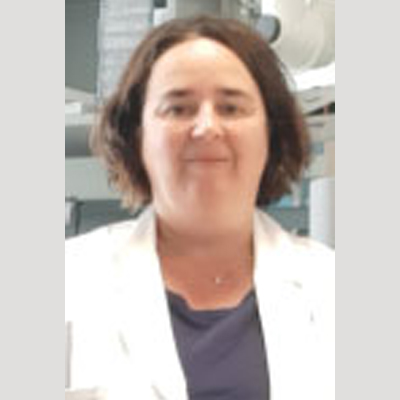Sara Baldelli
Unit of Clinical Pharmacology
Luigi Sacco University Hospital, Milan, Italy
This month we hear from Sara Baldelli from the Unit of Clinical Pharmacology, Luigi Sacco University Hospital in Milan. Sara shares about the achievements of the lab, where they have come a long way since opening 10 years ago. I was especially interested to hear about the Quality by Design (QbD), a concept applied to developing new analytical methods. For the future, Sara has her eye on emerging variants of ambient ionization mass spectrometry that may enable direct measurements in tissues and organs.
Can you tell us a little bit about your respective roles? What is a typical day like for you?
I am a chemist specialized in Clinical Pharmacology and I work in the Laboratory of Pharmacokinetics at Sacco University Hospital in Milan. My most important role is to propose new molecules to test and how to measure them, based on clinician requests and recent literature data, in particular innovative molecules, for which kits are not available. I develop liquid chromatography-mass spectrometry methods, validate them according to international guidelines, and verify their feasibility in clinical settings.
Is there anything that your laboratory does, or that is done at your centre, that you would consider innovative?
The introduction of applied personalized medicine in a routine context has been revolutionary for our center. Since our Laboratory opened 10 years ago, clinicians from our centre, and from other hospitals, have been referring patients to us for optimization of drug doses in atypical patients and/or in complex clinical scenarios.
What technological innovations have entered into use during your career that have permitted a change, or evolution, in practice?
The introduction of ultra-performance liquid chromatography and the development of triple quadrupole mass spectrometry has enabled analysis of different molecules in different biological samples (blood, urine, tissue, saliva) with very limited sample quantity, in a short period of time, and with incredible specificity, precision and accuracy even with very low concentrations.
How did you become interested in your area of expertise?
After my graduation, I joined the Mario Negri Institute for Pharmacological Research in Bergamo, where I started working with immunosuppressive drugs. There, I met Dr. Dario Cattaneo who introduced me to TDM. When he moved to Milan, he invited me to be part of the Laboratory of Pharmacology at the Sacco Hospital, and I accepted. He and Prof. Clementi encouraged me to take a specialization degree in Pharmacology. And here I am.
These days immunosuppressants are a minority of our analyses. We are mostly involved in anti-infective drugs and I must admit that TDM in this field is stimulating.
Is there anything that you’ve seen or heard about recently and thought “I’d like to incorporate that idea at my center”?
I have many ideas, but a concept that we have pioneered is the introduction of the Quality by Design (QbD) concept in the development of new methods. The QbD practice emphasizes product and process understanding and control, based on rigorous science and quality risk management. Recently, this approach has been applied to analytics, and analytical QbD principles also in clinical laboratories can help to develop analytical methods through a systematic approach, providing significant advances over traditional heuristic and empirical methodology.
I believe that this approach may represent a novelty for the clinical laboratory and a clear guide to controlled development of very robust and reliable bioanalytical methods for its clinical application.
What sort of research do you have on the horizon that you think might influence clinical practice in the future?
I think that in the era of multidrug resistant pathogens, TDM of anti-infective drugs can play an important role in routine clinical care to improve treatment outcomes in critically ill patients with severe infections.
What do you consider is the future for TDM and CT? What are you excited about? What are the challenges we face?
Due to the multiple advantages that undeniably have been reported in the last 20 years, I think that the applicability of TDM will grow mostly in particular settings: pediatric, critically ill, geriatric patients.
In the future, I think a miniaturized portable mass spectrometer will become available, enabling drug concentration measurement at the patient’s bedside and facilitating rapid clinical decision-making.
Numerous variants of ambient ionization mass spectrometry have been designed that permit an ionization through a probe directly applied to live organs, skins, tissues, biological fluids, aiding instantaneous capture of different molecules from those samples. I think therefore that we will see this happen in the not too distant future.
Regarding challenges in TDM, I think a major obstacle is the financial aspects. We should collect data to demonstrate that TDM based approaches are cost-effective and associated with significant improvements in patient outcomes.
How has COVID-19 affected your professional life?
It was a stressful period especially from a psychological point of view rather than a physical one. The emotions were different: the sense of uncertainty and fear and feeling useless in front of this novel virus, even professionally, was demoralizing. Living in the province of Bergamo, the most severely affected in the first wave, and working in the Hospital recognized as national centre for COVID-19 I was overwhelmed by requests and by emotions. Every working day, returning home, I needed to reassure my children and my family with a smile on my face that everything would be fine, even if I wasn’t so sure.
The content of the IATDMCT Blog does not necessarily have the endorsement of the Association.



